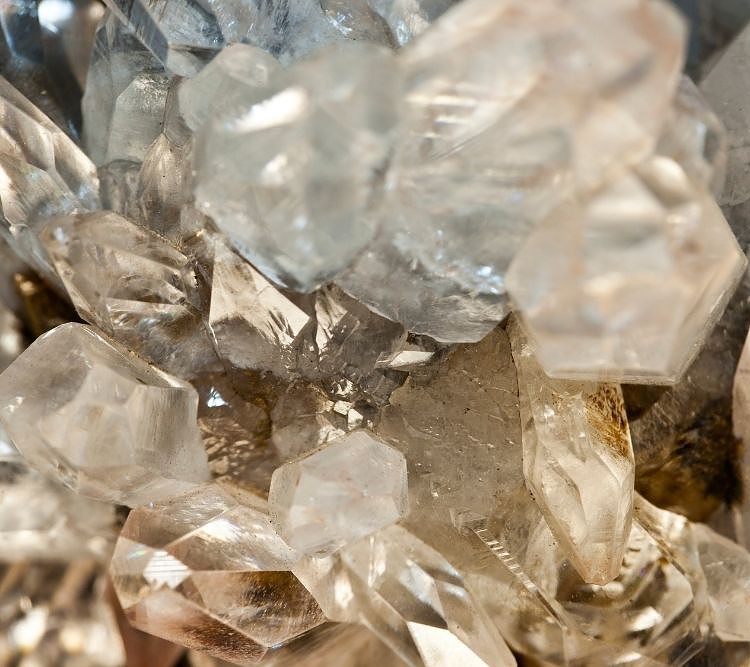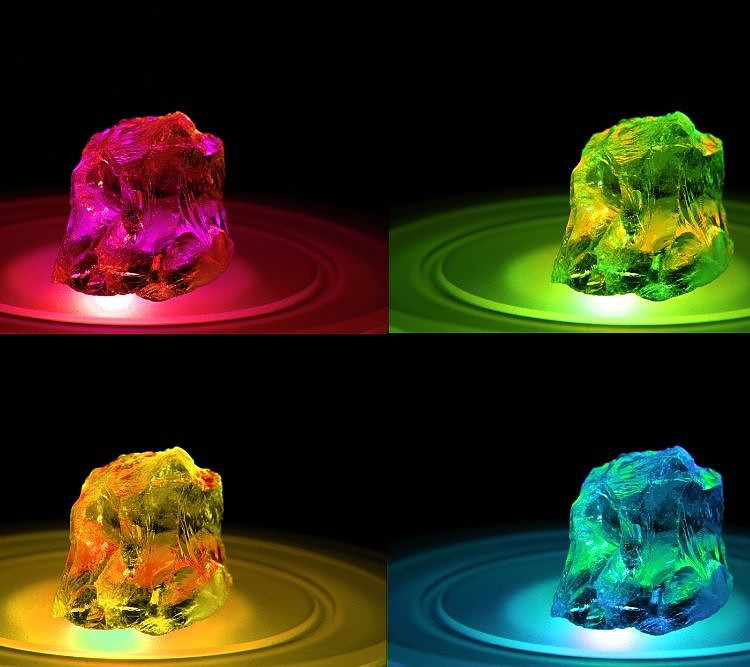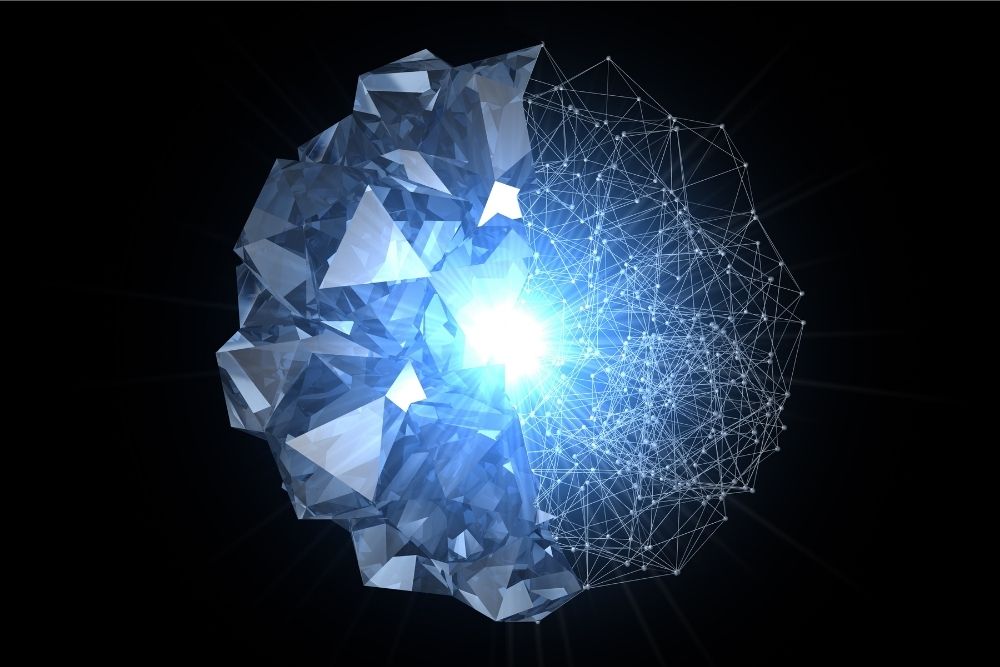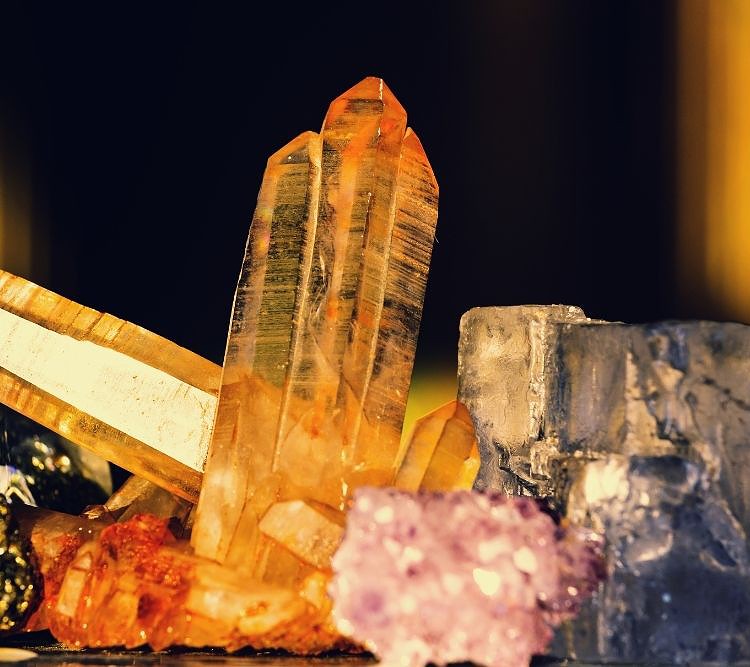With the recent opening of Savi’s Workshop at Disney Parks, Star Wars fans around the world are now wondering: “How exactly do lightsaber crystals work?”
That’s a good question!—but the answer is complicated, and depends on if you default to Disney Canon or Legends material.
For the sake of clarity, this article will cover both!
You don’t have to thank us.
Table of Contents
What are lightsaber crystals, again?

Lightsaber crystals (or Kyber crystals ) are a naturally-growing mineral found across the galaxy, with large deposits in planets such as Illum.
According to Disney Canon, they are made of both inorganic and organic elements, and are naturally attuned to the Force because of it.
Even crazier:
In canon, kyber crystals are like living creatures! They can communicate with each other through the Force, become warm to the touch, and even mutate when pumped with radiation.
In Legends, it’s quite a bit different:
There, lightsaber crystals can be nearly anything, from kyber crystals, to stones, to glass, or even pure machinery, so long as it’s attuned to the Force.
Kyber crystals in Legends are not alive, nor can they mutate in cool ways when radiated.
Kyber crystals, though, share some traits between Canon and Legends: they are found in large veins of Kyberite, and only work when harvested pure (that is, without any other materials in it), for example.
They acquire the special Force properties of a lightsaber from meditation, where a Force user imbues the crystal with their own personality. This means that, for example, Darth Maul’s four crystal blade has a different Force energy than Luke Skywalker’s synthetic crystal blade, both from Legends.
Okay, so how do kyber crystals get their color?

In Disney canon, kyber crystals are found naturally colorless, and only become one of many hues after the Force meditation by their user.
While kyber crystals are usually attuned to the light side of the Force, something special happens when they’re used for the dark:
They turn red!
The process for turning a kyber crystal into a tool of the dark side is called “bleeding,” and allows a Force user to take an already colored crystal (Anakin Skywalker’s blue lightsaber, for example), and turn it into a blood-red dark side killing machine.
Keen readers may ask:
“Is the reverse possible, too?”
Yes! See Ahsoka Tano’s dual white blades in Rebels for an example of light side-bled kyber crystals (they were taken from the blade of an inquisitor).
In Legends, however, the story is a bit more complicated:
Kyber crystals are found naturally colored, the various lightsaber hues except red. Those are only created synthetically in Legends.

The color of a Force user’s blade used to correlate with their ‘class,’ or traits about their personality. Here’s what they represent:
Blue represented a Jedi Guardian, someone who fought the dark side using their conviction and battle prowess.
Green represented a Jedi Consular, someone who fought the dark side using their peace and Force capabilities
And yellow, for a Jedi Sentinel, someone who balanced between combat and other pursuits (such as guarding the Jedi temple).
Eventually, in Legends, this class system fell out of use, and Jedi began to pick crystals out of connection with the Force, or personal tastes.
Regardless, fans have speculated meanings for the other colors, too: purple for someone who teeters with the dark side (see Mace Windu’s aggressive fighting style, or Mara Jade’s imperial past), orange being interchangeable with yellow, and the rare gold lightsaber for those of special connection with the Force (see Qu Rahn’s lightsaber).
But, these can be dubious without official sources.
What happens if a crystal cracks?

Cracking a lightsaber crystal seems counter-intuitive, but it appears to not affect the functionality of the lightsaber at all!
Kylo Ren’s kyber crystal is an example of what happens when a crystal is damaged in Canon; it’s what gives the blade itself the jagged, crackling appearance we associate with his lightsaber.
It’s even part of the reason why the hilt has its distinctive crossguard:
The thermal energy produced by a cracked crystal is so great that, to avoid explosion, vents were required to divert the energy away from the insides of the lightsaber, such as the power cell!
Power Cell? Wait, so does the kyber crystal power the lightsaber?

Nope.
See: in both Legends and Canon, the kyber crystal requires a power cell (usually diatium) to actually emit the blade.
However, without the Force attunement of the kyber crystal, it would be considered impossible to truly wield the lightsaber itself.
Because wielding the lightsaber needs a level of connection to the Force that allows, for example, a Jedi to change the tide of battle against a Sith opponent in dire straits (like what Rey did in her first duel against Kylo Ren).
Hence, this is why non-Force users are not that great at lightsaber combat (see Finn using the same lightsaber against Kylo Ren).
And how do the power cells work?

We can sum this up quite nicely:
The power cell shoots a beam of plasma through the lightsaber crystal, and is held back by a magnetic field, which recycles the energy of the plasma bolt.
This is why you don’t see Jedi recharging their lightsabers, and why their blade doesn’t go on forever!
However, some Legends sources also claim that making sure the blade has a tip is done by a ‘focusing lense,’ a special type of lense that regulates the length of the plasma beam.
The power cell also has some fancier stuff like power field conductors, inert power insulators and whatnot, but here’s what you need to know:
The inert power insulator, like the name suggests, is what insulates the power cell—or, in other words, it’s what keeps the power cell from electrocuting you!
The magnetic stabilizing loop and ring tuning flange make sure that the lightsaber blade doesn’t poke out the wrong end of the handle.
And, finally, there are usually also some power knobs or length adjusters to tinker with the blade itself.
Is that it?
Well, if this article really got your mind running, and you want more information about lightsaber construction and history, you can check out some of our other articles here, or look through the Star Wars fandom repository Wookieepedia (the source for all details here)!
But otherwise, you can now impress* your friends with your intricate knowledge of the inner-workings of the lightsaber crystal and its power cell!
*May not impress friends, may cause friends to leave in annoyance. We’re not responsible if they do.


Mike
Friday 23rd of July 2021
This was very informative and fun!